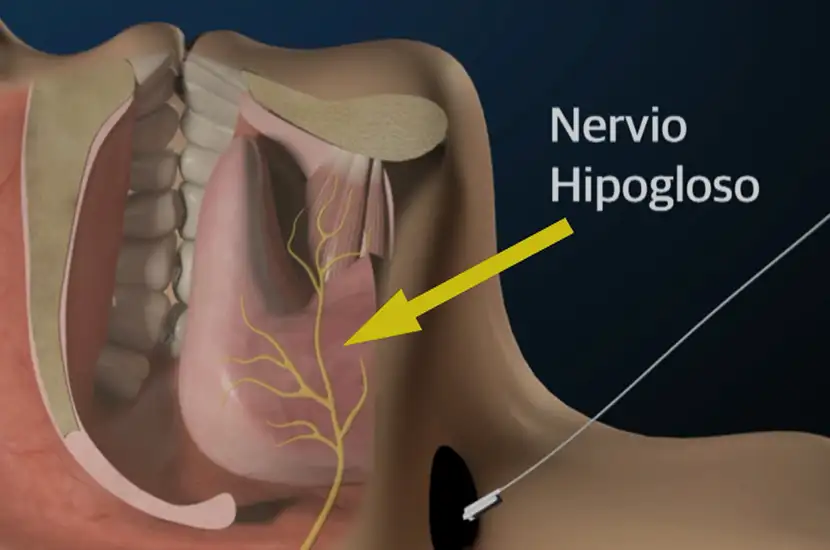Obstructive sleep apnea syndrome surgery
"There are very effective treatments that can change the patient's quality of life in a very noticeable way".
DR. JUAN MANUEL ALCALDE SPECIALIST. OTORHINOLARYNGOLOGY DEPARTMENT

Surgery is the ultimate solution for sleep apnea syndrome.
The Clínica Universidad de Navarra, with more than 20 years of experience in the diagnosis and treatment of these disorders, has the latest advances in detecting and resolving these alterations.
You will be attended by a multidisciplinary team, integrated by departments such as Pneumology, Neurology, Otolaryngology, Endocrinology, Pediatrics, Psychiatry, Oral and Maxillofacial Surgery and Neurophysiology.
The Clínica Universidad de Navarra is a pioneer in Spain in robotic surgery by oral cavity.
It is an innovative surgical system, using robotic surgery. Thanks to the precision of the Da Vinci robot and its three arms, which introduce a camera, forceps and electro-scalpel into the patient's mouth, and which is directed by a surgeon with specialized knowledge, it is possible to extract the remaining tissues without open procedures.
This successful technique resolves 90% of obstructive sleep apneas.

When is surgery indicated for OSAS?
It is especially indicated for people with small jaws or maxilla, since, besides avoiding apnea, it improves the aesthetics of the face. It is done through incisions inside the mouth, so there are no external signs on the skin.
It consists of advancing the upper jaw, the jaw and the muscles at the base of the tongue. This leaves enough space in the back of the oral cavity to avoid obstructing the passage of air while sleeping.
Most frequent indications for this treatment:
Are you diagnosed with sleep apnea?
Surgery for OSAS may be indicated
Learn about the different alternatives to treat sleep apnea
There are several types of surgical treatments that can be performed to improve nasal ventilation. Septoplasty, functional endoscopic surgery and reconstructive surgery of the nasal structures are frequently performed.
Nasal surgery alone does not improve Obstructive Sleep Apnea Syndrome but can improve snoring and mild apnea.
In addition, it has been shown that performing nasal surgery improves tolerance to CPAP, resulting in longer use with a more favorable long-term response to the CPAP mask.
Radiofrequency is a procedure that uses radiofrequency energy to treat the area of the palate and uvula that is hypertrophied.
This intervention is performed under local anesthesia and requires a minimum hospital stay.
The results of this surgery have been shown to be favorable by reducing the size of the tonsils by approximately 50% and greatly improving sleep.
It is recommended to use antibiotics preventively to avoid infections as well as corticosteroids to reduce postoperative inflammation.
Surgery is a definitive solution for certain cases of OSAS.
It is especially indicated for people with a small jaw or jawbone, since, besides avoiding apnea, it improves the aesthetics of the face. It is performed through incisions inside the mouth, so there are no external signs on the skin.
It consists of advancing the upper jaw, the jaw and the muscles at the base of the tongue. This leaves enough space in the back of the oral cavity to avoid obstructing the passage of air while sleeping.
The Clinic is the first Spanish center that performs this operation with this robotic technique, performed under general anesthesia.
Sometimes, it is not enough to expand the space, but it is also necessary to remove tissue to achieve greater opening of the airway. A technique called uvulopalatopharyngoplasty combines the advancement of the maxillary bones with soft tissue surgery. It consists of eliminating the redundant part of the soft palate and, if necessary, reducing the base of the tongue.
In addition, when the bones of the face are retracted, in faces with little projection, the airway is very narrow and has a tendency to collapse during sleep, oral and maxillofacial surgeons correct this defect through orthognathic surgery.
Treatment
Stimulation of the hypoglossal nerve
The Clinic is a pioneer in the treatment of sleep apneas through the stimulation of the hypoglossal nerve. It is aimed at those patients who do not respond satisfactorily to CPAP.
The goal of this procedure, which requires 24 hours of admission, is to push forward the base of the patient's tongue and palate to allow air to enter during sleep.
Where do we do it?
IN NAVARRA AND MADRID
The Department of Otolaryngology
of the Clínica Universidad de Navarra
The Department of Otorhinolaryngology of the University of Navarra Clinic is a national and world reference in numerous highly specialized surgical procedures.
We have the latest technology and we perform all diagnostic tests in less than 48 hours in order to offer our patients the best solution in the shortest time possible.
We were one of the first centers in Spain to use robotic surgery in the surgical treatment with the Da Vinci® System.
Organized in specialized units:
- Otology - Hearing.
- Rhinology - Nose.
- Pharyngology - Throat.
- Laryngology - Voice.
- Balance disorders.
- Head and neck problems.

Why at the Clinica?
- Experts in the treatment of hearing problems.
- Pioneers in axillary surgery to avoid scarring.
- National reference center in tissue sealing for tonsil removal.














